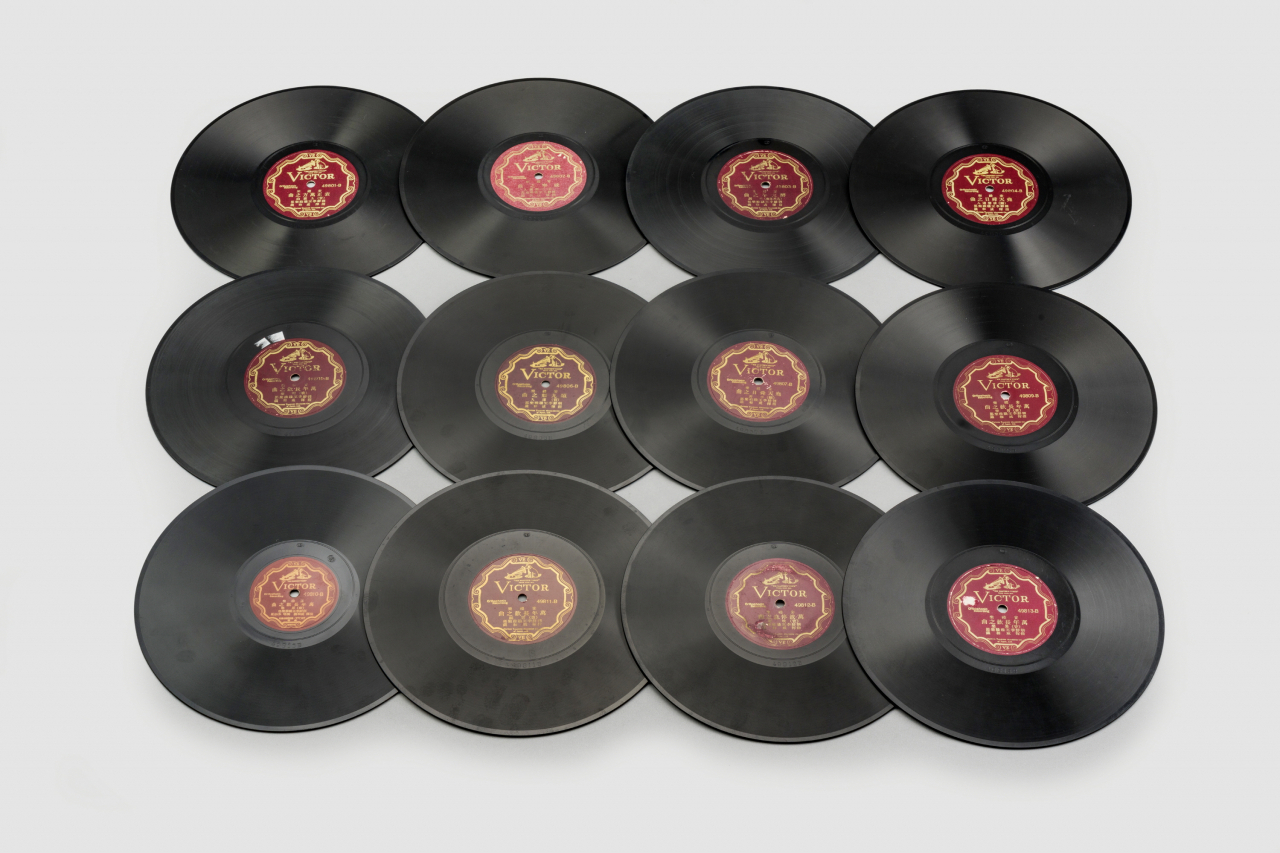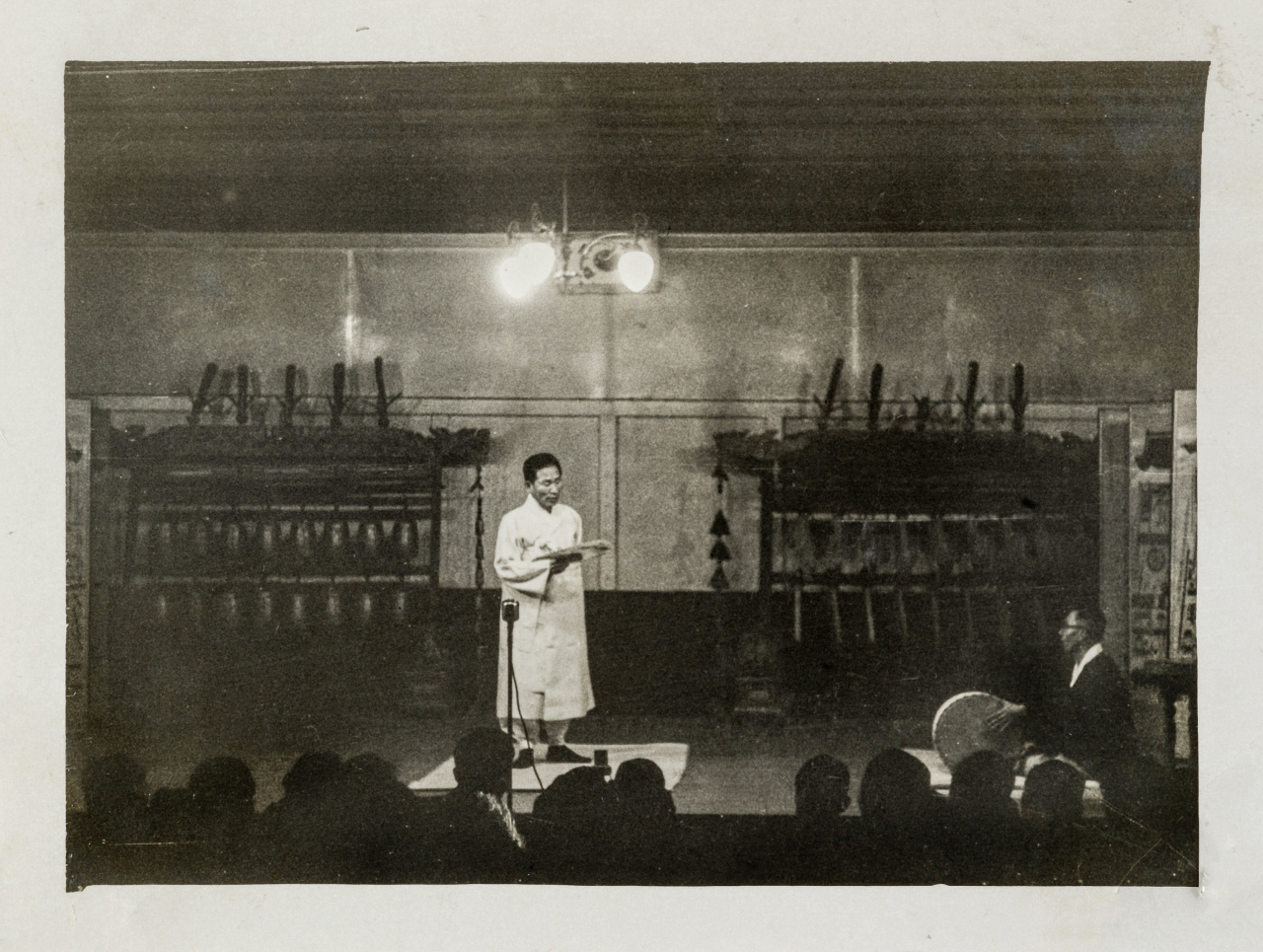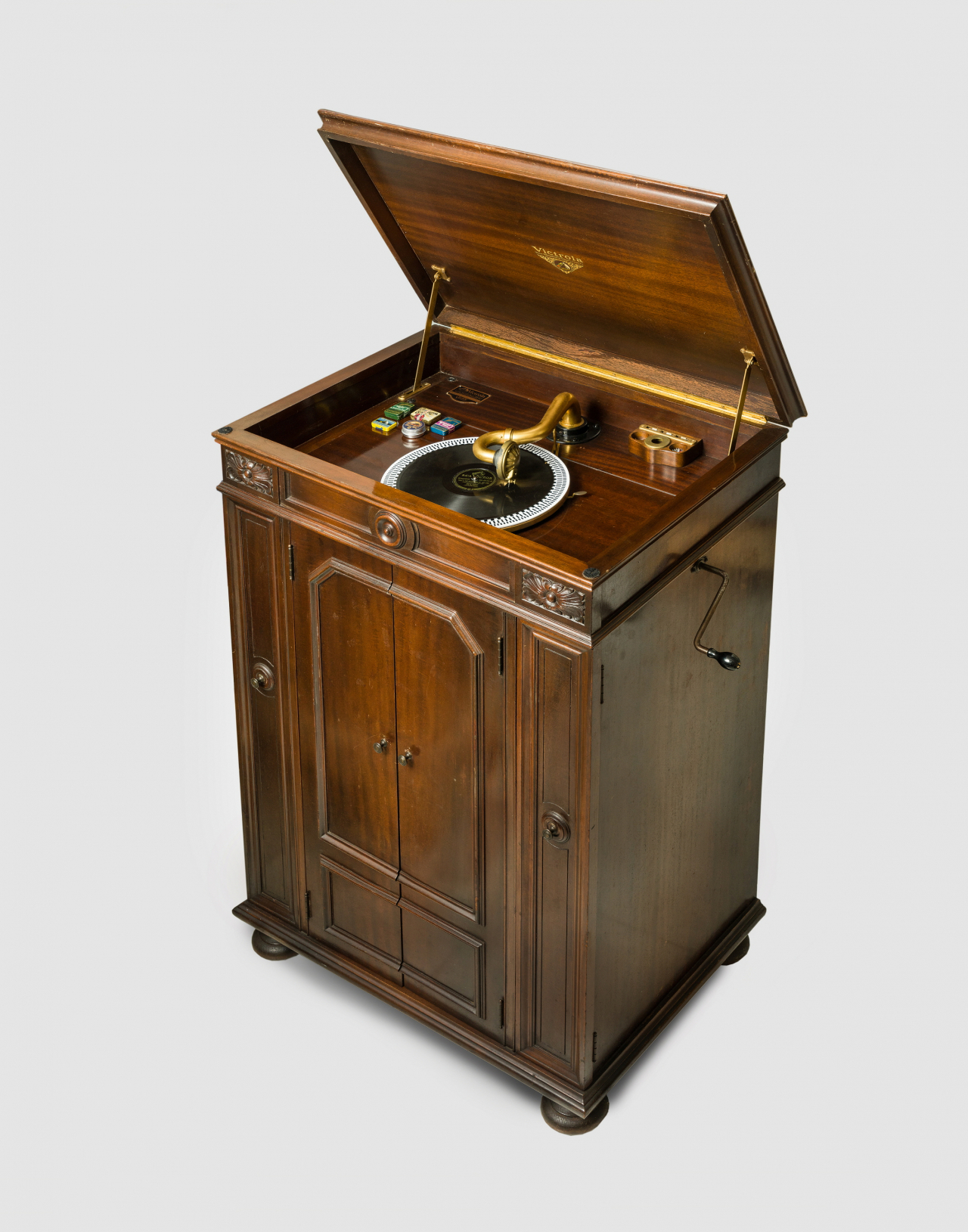 |
A 1928 Joseon royal court music album, "Joseon Aak," produced by Victor Records using microphones for the first time in Korea (NGC) |
The National Gugak Center and the Arumjigi Culture Keepers Foundation, a non-profit organization dedicated to promoting traditional Korean culture, have collaborated to showcase a unique exhibition featuring the captivating sounds of pansori, court music and traditional folk songs from century-old records.
The “House of Records, See the Sound" exhibition, held at the Arumjigi cultural center in Jongno-gu, Seoul, aims to recreate the auditory experience of traditional Korean music from a bygone era by showcasing some 61 music scores that were recorded through standard-playing records.
The records showcased at the exhibition are from collections of the National Gugak Center, supplemented by donations. The exhibition also carries relevant photographs and promotional materials, offering a comprehensive glimpse into Korea's musical heritage.
The venue has been set up to evoke the atmosphere of an era when gramophones became the main means of sound consumption, allowing visitors to immerse themselves in the ambiance of the time.
First introduced in the late 19th century during the Joseon era, gramophones were considered luxury items beyond the reach of ordinary citizens. Historical records reveal that specific venues served as gathering places for families and neighbors, providing them the opportunity to listen to the captivating sounds produced by these costly devices.
The Arumjigi center itself is of great significance, as it coincides with some of the venue locations where gramophones were once installed.
The exhibition is structured across three floors, each offering a distinct perspective on the development and influence of the modern music industry.
The first floor provides an overview by highlighting key figures such as pansori artists and industry pioneers who have shaped the musical landscape.
On the second floor, visitors can embark on an immersive experience. At 2:30 p.m. every day, a Credenza gramophone, manufactured in 1925, plays a 20-minute selection of Korean folk songs from the 1930s to the 1950s. An audio room is available for visitors to enjoy the exhibition's full collection at their convenience.
 |
Pansori master Lim Bangul's "Sugung-ga" performance held at the National Gugak Center's music hall on Nov. 24, 1956 (NGC) |
The third floor brings attention to contemporary artists who blend traditional pansori sounds with their own unique interpretations. The section showcases trending music videos, including the “Feel the Rhythm of Korea" series produced by the Korea Tourism Organization, with explanations on the artists' creative processes.
Every Saturday, talks featuring experts from the traditional music industry will be held at 11 a.m. to provide an engaging platform for discussions on Korean traditional music. From 2 p.m., folk musicians from the National Gugak Center will hold 20-minute long music performances ranging from traditional instruments such as the gayageum and daegeum to pansori sounds.
Admission is free. Advance reservations are required for talks and music performances and can be booked through Naver. The exhibition ends June 30.
For those unable to visit the site, the National Gugak Center's official website allows online access to some 100 scores, including digitized versions of 50 standard-playing records.
 |
A 1925 Credenza gramophone located at the second floor of the “House of Records, See the Sound" exhibition (NGC) |






![[Today’s K-pop] Blackpink’s Jennie, Lisa invited to Coachella as solo acts](http://res.heraldm.com/phpwas/restmb_idxmake.php?idx=644&simg=/content/image/2024/11/21/20241121050099_0.jpg)
